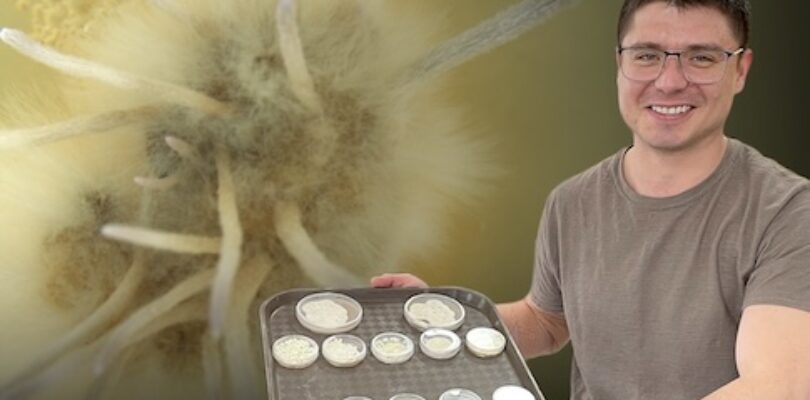WSU researchers hope to kill orchard pests with ‘zombie’ fungi
Published 9:05 am Thursday, June 5, 2025
- Cesar Reyes Corral, a graduate research assistant, holds petri dishes used to grow and study pathogens of tree fruit pests. In the background, a fungus feeds on a dead codling moth larvae in a Washington State University lab experiment. (Courtesy image, WSU)
Researchers want to use bug-hunting fungi to protect orchards from pests such as codling moth, a major problem for apples, pears and walnuts.
Scientists are growing three species of fungi at Washington State University’s Tree Fruit Research and Extension Center in Wenatchee, Wash.
One strain is related to the “zombie” Cordryceps fungus that inspired the video game and television series “The Last of Us.”
“If these fungi are as effective and adapted for our environment as they appear to be, they could become really useful tools,” said Rob Curtiss, a research assistant professor in the department of entomology.
Little risk to humans
Curtiss said the study’s fungi occur naturally in Pacific Northwest orchards and have evolved over millions of years to parasitize insects — they don’t attack mammals or fruit trees.
The chances of a zombie outbreak are “phenomenally low,” Curtiss said. As a scientist, he wouldn’t say there was zero risk.
The “Last of Us” concept could target a range of insect pests, however.
Every pest has bacterial, fungal or viral vulnerability, Curtiss said. The key is finding those enemies.
Fortune favors the mold
Curtiss established a codling moth colony in 2023 and during that rainy fall, his team hurried to collect pupae before their cocoons could mold.
“I started to see the occasional dead codling moth that looked like it had been killed by a fungus,” Curtiss said.
He showed his finds to fellow WSU entomologist Tobin Northfield and his student Cesar Reyes Corral.
Reyes Corral used dead larvae to grow and identify strains of Ophicordyceps, Beauveria and Metharizium.
“We got lucky we were able to find three different organisms all at once. Sometimes it takes years and years to only find one,” Curtiss said.
Creating a commercial product
In their experiments, Curtiss and Reyes Corral will select specimens for optimal fast growth and kill rates, with the goal of developing a WSU strain for commercial production.
“So far in our testing, it’s been extremely positive,” Curtiss said.
One of the species caused 50% mortality with codling moth larvae.
Releasing a commercial product could take three to five years, but because the fungi are native, the approval process would be streamlined.
Companies already are skilled in raising pathogens in massive numbers for agricultural applications.
Curtiss anticipated heavy demand from organic growers — codling moths are gaining resistance to a widely-used viral bio-control.
“I have farmers who want it today. They’re asking how much I can grow and if we can spray it this year. But we’re not at that point yet,” Curtiss said.
His project has about $500,000 in funding, though the cost will likely rise.
Still, that’s relatively cheap as companies often spend $20 million to develop traditional pesticides, Curtiss said.
He added the project can give growers hope, and the more pest control modes that scientists can provide farmers the better.
“I’m sure there’s a future where these and other beneficial fungi are useful for fruit growers,” said Reyes Corral, a soon to be PhD graduate, in a news release.
You Might Like




